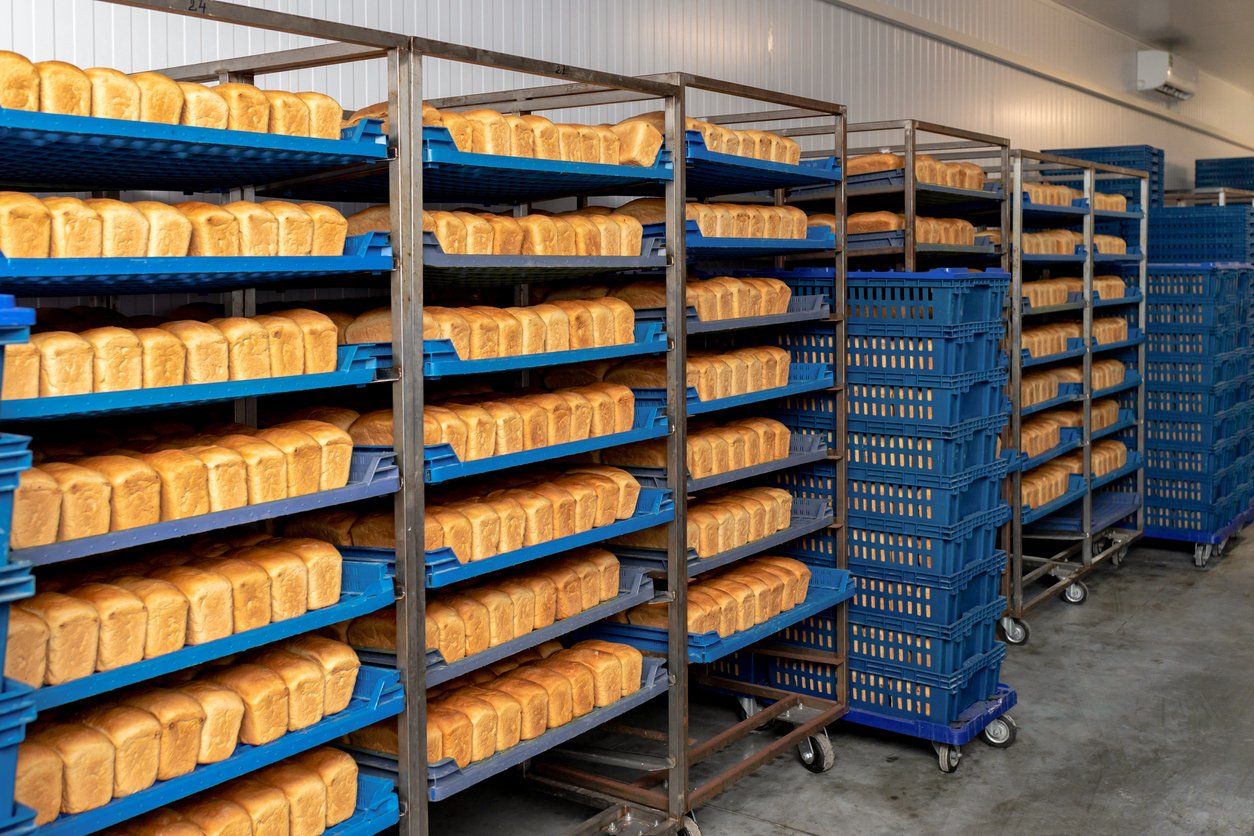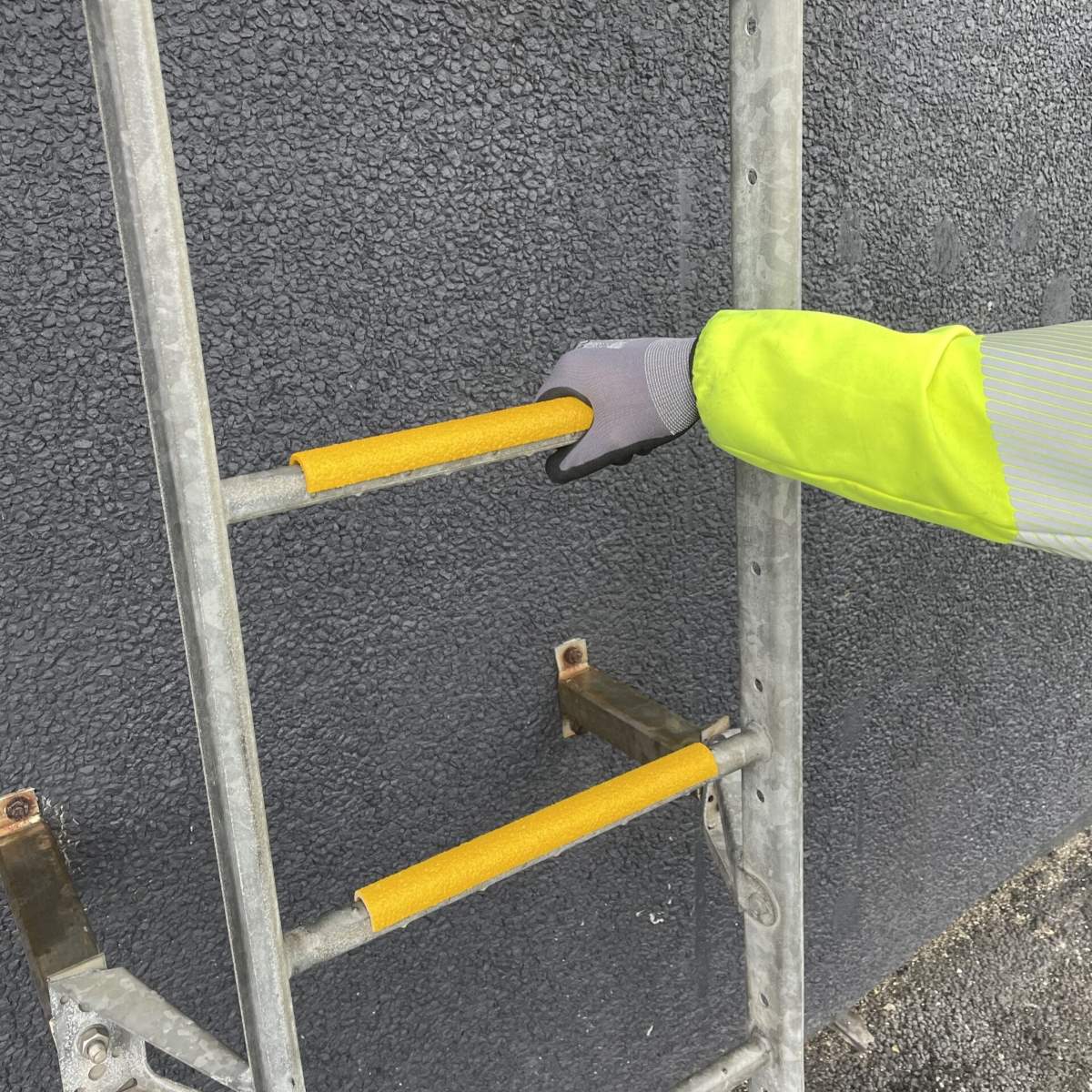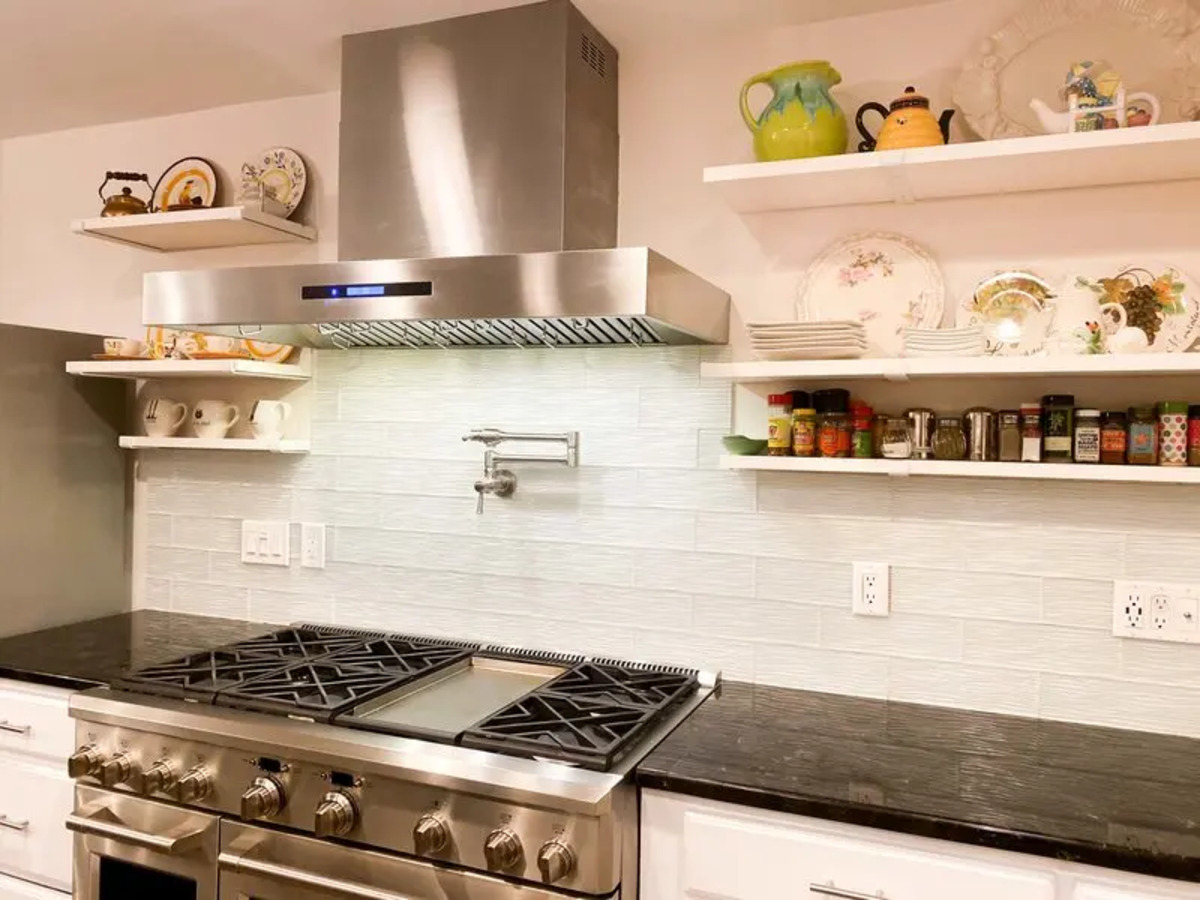

Articles
How Far Off The Floor Should Food Be Stored?
Modified: May 6, 2024
Discover the proper storage height for food in your kitchen. Read articles on how far off the floor food should be stored and maintain a hygienic environment.
(Many of the links in this article redirect to a specific reviewed product. Your purchase of these products through affiliate links helps to generate commission for Storables.com, at no extra cost. Learn more)
Introduction
Storing food properly is essential to maintain its freshness, taste, and safety. One crucial aspect of food storage is the distance between the food and the floor. While it may seem like a trivial detail, the height at which food is stored can have a significant impact on its overall quality and hygiene.
Factors such as cleanliness, pest control, and temperature regulation are all influenced by the height at which food items are kept. Whether you are storing food on shelves, in refrigerators, or in pantries, it is important to consider the optimal height to ensure the longevity and safety of your edible goods.
In this article, we will explore the various factors that should be considered when determining how far off the floor food should be stored. We will also delve into specific guidelines for shelf storage, refrigerator storage, and pantry storage. Additionally, we will discuss proper storage techniques that can help you maintain the quality and freshness of your food items.
By understanding and implementing these recommendations, you can prevent contamination, preserve nutritional value, and prevent unnecessary waste. So, let’s dive in and explore the best practices for storing food at the appropriate height.
Key Takeaways:
- Elevating food storage off the floor prevents contamination, deters pests, and maintains optimal temperature and cleanliness, ensuring fresh, safe, and high-quality food items.
- Proper storage techniques, such as FIFO method, labeling, airtight containers, and regular cleaning, contribute to organized, hygienic, and efficient food storage across shelves, refrigerators, and pantries.
Read more: How Far Off Floor Should Curtains Be
Factors to Consider
Before we get into the specifics, let’s take a look at some critical factors to consider when deciding how far off the floor food should be stored.
Cleanliness: Keeping food off the floor prevents direct contact with potentially dirty surfaces, reducing the risk of contamination from dirt, dust, or other impurities.
Pest Control: Storing food a certain distance off the floor can deter pests such as rodents and insects that may attempt to access and contaminate your food.
Air Circulation: Allowing for proper air circulation around food items can help prevent the growth of mold and bacteria, as well as maintain optimal temperature and humidity levels.
Temperature Regulation: Placing food at the appropriate height off the floor can help ensure better temperature regulation, especially in areas prone to temperature fluctuations.
Accessible Cleaning: Having food stored off the floor makes it easier to clean the area beneath the shelves or storage units, reducing the chances of the accumulation of dirt and other potential contaminants.
Now that we understand the importance of considering these factors, let’s delve into the different storage methods and their recommended height guidelines.
Key Takeaways:
- Elevating food storage off the floor prevents contamination, deters pests, and maintains optimal temperature and cleanliness, ensuring fresh, safe, and high-quality food items.
- Proper storage techniques, such as FIFO method, labeling, airtight containers, and regular cleaning, contribute to organized, hygienic, and efficient food storage across shelves, refrigerators, and pantries.
Read more: How Far Off Floor Should Curtains Be
Factors to Consider
When it comes to determining how far off the floor food should be stored, there are several important factors to consider. These factors play a crucial role in maintaining the quality, safety, and longevity of your food items. Let’s take a closer look at each one:
Cleanliness: Keeping food off the floor is essential for maintaining cleanliness and preventing contamination. Storage areas on the floor can be breeding grounds for dirt, dust, and other potential contaminants. When food comes into direct contact with the floor, it can easily pick up these impurities, compromising its quality and safety. By storing food at an appropriate height, you can minimize the risk of contamination and ensure that your food remains clean and safe for consumption.
Pest Control: Storing food at a certain distance off the floor is a key preventative measure for pest control. Rodents and insects can pose a significant risk to stored food, as they can access it easily when it is stored on or near the floor. By elevating food storage, you create a barrier that deters pests from reaching your food. This reduces the chances of contamination and helps to protect the integrity of your stored items.
Air Circulation: Allowing for proper air circulation around stored food is crucial for maintaining its freshness and preventing the growth of mold and bacteria. When food is kept directly on the floor, the airflow around it may be restricted, leading to the buildup of moisture and the potential for microbial growth. By storing food off the floor, you create space for air to circulate, reducing the risk of spoilage and maintaining optimal conditions for the storage of perishable items.
Temperature Regulation: The temperature at which food is stored plays a vital role in its quality and safety. Certain food items require specific temperature ranges to prevent spoilage and maintain their freshness. Placing food at an appropriate height off the floor can help ensure better temperature regulation. This is particularly important in areas where there may be temperature fluctuations, such as near heating vents or in basements. By keeping food off the floor, you can minimize the impact of temperature variations and maintain a more stable storage environment for your food items.
Accessible Cleaning: Keeping the storage area beneath shelves or storage units clean and free from debris is essential for maintaining a hygienic environment. When food is stored directly on the floor, it can be difficult to clean the area underneath, leading to the accumulation of dirt, dust, and potential contaminants. Storing food at an elevated height makes it easier to access and clean the storage area, reducing the risk of contamination and ensuring a more sanitary storage space for your food.
By considering these factors and implementing appropriate storage practices, you can ensure that your food remains fresh, safe, and free from contamination. In the following sections, we will discuss the recommended height guidelines for different storage methods, including shelf storage, refrigerator storage, and pantry storage.
Shelf Storage
Shelves are commonly used for storing dry and non-perishable food items in both home and commercial settings. When it comes to shelf storage, there are a few guidelines to keep in mind regarding how far off the floor food should be stored.
1. Adjustable Shelves: If your shelves are adjustable, set them at a height that allows for easy access and proper storage conditions for your food items. Generally, it is recommended to keep the lowest shelf at least 6 inches (15 cm) off the floor to prevent any potential contact with dirt or moisture.
2. Consider the Packaging: Take into consideration the size and packaging of the food items you are storing. If they are in sealed containers or packaged in materials that provide adequate protection, you may have more flexibility in how low you can store them. However, it is still advisable to keep them at least a few inches off the floor to minimize the risk of contamination.
3. Pay Attention to Spillage: Be mindful of potential spills or leaks from other items stored on higher shelves. Even if food is stored at a suitable height, liquids or other contaminants can still drip down and come into contact with the lower shelves or the floor. Therefore, it is crucial to store items that have the potential to spill or leak in a way that minimizes the risk of contamination to other food items and the surrounding area.
4. Consider Shelf Stability: Ensure that the shelves are sturdy and can support the weight of the stored food items. Overloading shelves or placing heavy items on higher shelves without proper support can compromise the structure and lead to a safety hazard. It is important to distribute the weight evenly and follow any specific weight limits recommended by the shelf manufacturer.
By following these guidelines for shelf storage, you can maintain a clean and organized space while ensuring the safety and longevity of your non-perishable food items. Now, let’s move on to discussing the recommended height for storing food in refrigerators.
Remember to always check the packaging and read any specific storage instructions provided by the manufacturer for optimal shelf storage.
Store food at least 6 inches off the floor to prevent contamination from pests, moisture, and cleaning chemicals. Use shelving or pallets to elevate food items.
Refrigerator Storage
The refrigerator is a vital appliance for keeping perishable food items fresh and safe for consumption. When it comes to storing food in the refrigerator, there are a few guidelines to consider regarding how far off the floor food should be stored.
1. Bottom Shelves and Drawers: The bottom shelves and drawers of the refrigerator are typically colder and more prone to condensation. To prevent contamination from any potential liquids or condensation, it is advisable to store food items in sealed containers or wrapped securely, and keep them at least a few inches off the floor. This ensures that they are not in direct contact with any moisture or potentially dirty surfaces.
2. Cross-Contamination Prevention: Storing raw meat, poultry, and seafood on the bottom shelves or in separate drawers can help prevent cross-contamination with other foods. If these items are stored in leak-proof containers or packaging, placing them on the lower shelves can minimize the risk of any potential juices dripping onto other foods.
3. Adjustable Shelves and Drawers: If your refrigerator has adjustable shelves or drawers, you have the flexibility to set them at heights that suit the size and packaging of your food items. Consider the overall layout of your refrigerator and arrange the shelves and drawers accordingly to maximize space and ensure proper airflow.
4. Temperature Zones: Refrigerators often have different temperature zones, with the bottom being colder than the upper shelves. Understanding these temperature variations can help you determine where to store different types of food. For example, delicate fruits and vegetables may benefit from the slightly warmer temperatures of the upper shelves, while milk and other perishables are best stored in the colder zones.
5. Hygiene Maintenance: Regularly cleaning the shelves, drawers, and the area beneath them is essential for maintaining a hygienic refrigerator. By keeping food items at an appropriate height, it becomes easier to clean the surrounding area, preventing the buildup of dirt, spills, and potential contaminants.
By following these guidelines for refrigerator storage, you can ensure optimal freshness, prevent cross-contamination, and maintain an organized and clean refrigerator space. Next, let’s discuss the recommended height for storing food in pantries.
Remember to always check the manufacturer’s instructions for storing specific food items, as some may have specific temperature requirements or storage recommendations within the refrigerator.
Read more: How Far Should Drapes Be Off The Floor
Pantry Storage
The pantry is a designated area for storing various food items that do not require refrigeration. When it comes to pantry storage, there are a few guidelines to consider regarding how far off the floor food should be stored.
1. Shelving: Pantries typically have shelves for storing dry goods such as canned foods, boxed items, and snacks. It is recommended to keep the lowest shelf at least 6 inches (15 cm) off the floor to prevent contact with any potential dirt, moisture, or pests that may be present on the floor.
2. Containers and Packaging: To maintain freshness and minimize the risk of contamination, store food items in sealed containers or with tight-fitting lids. This helps to safeguard against pests, moisture, and potential spills. By storing food items in containers, you can also make it easier to organize and maintain a hygienic pantry.
3. Pest Prevention: Storing food off the floor in the pantry helps to deter pests such as rodents and insects. These pests are attracted to food, and by elevating it, you create a barrier that makes it more difficult for them to access and contaminate your food items. Additionally, regularly cleaning and inspecting your pantry can help identify and address any signs of pest activity.
4. Consider Accessibility: Arrange your pantry shelves in a way that allows easy access to frequently used items. Place items that are used less frequently on higher shelves and reserve the lower shelves for frequently accessed items. This ensures that you can easily reach and identify the items you need while maintaining a well-organized pantry.
5. Temperature and Light Considerations: Pantries should ideally be located in a cool, dry area away from direct sunlight to help preserve the quality and freshness of stored food items. Avoid placing perishable items or heat-sensitive foods on shelves near heat sources or in areas that receive direct sunlight.
By following these guidelines for pantry storage, you can ensure that your dry goods remain fresh, free from contamination, and easily accessible. Proper storage techniques in the pantry can help extend the shelf life of food items and maintain a well-organized space.
Remember to regularly check expiration dates and rotate your stock to ensure that you use older items first. By maintaining a clean and well-managed pantry, you can minimize waste and make the most out of your stored food items. Now, let’s move on to discussing some proper storage techniques that apply to all storage areas.
As with any storage method, always check the packaging and read any specific storage instructions provided by the manufacturer for optimal pantry storage.
Proper Storage Techniques
Regardless of whether you are storing food on shelves, in the refrigerator, or in the pantry, there are some general storage techniques that should be followed to maintain the quality and safety of your food items.
1. First-In, First-Out (FIFO): Implementing the FIFO method ensures that older food items are used first, reducing the risk of spoilage and food waste. Arrange your food items in a way that allows for easy visibility and access to the oldest ones. This technique is particularly important when it comes to perishable items such as dairy products or items with shorter shelf lives.
2. Labels and Dates: Properly labeling your food items with the purchase or expiration dates can help you keep track of when they need to be used or discarded. This practice allows you to maintain better control over the freshness and quality of your stored food items. Labels can also help you easily identify specific items, preventing the accidental use of expired goods.
3. Use Airtight Containers: Whenever possible, store food items in airtight containers to minimize exposure to air, which can lead to oxidation and spoilage. Airtight containers also help to prevent the entry of insects, pests, and humidity, ensuring that your food remains fresh for a longer period. Be sure to choose containers that are suitable for the specific type of food being stored, taking into consideration factors such as moisture content and potential odor transfer.
4. Properly Seal Opened Packages: When you open packaged food items such as bags of flour or boxes of cereal, ensure that they are resealed tightly to prevent air and moisture from entering. Consider transferring these items to airtight containers to maintain their freshness and prevent them from getting stale or attracting pests.
5. Maintain Appropriate Temperature and Humidity: Different food items have varying temperature and humidity requirements for optimal storage. Pay attention to recommended storage temperatures and humidity levels for different types of food. For example, fruits and vegetables generally require slightly higher humidity levels to prevent wilting, while other foods may benefit from lower humidity levels to prevent spoilage and mold growth. Understanding the ideal conditions for storing different items can help prolong their shelf life and preserve their quality.
6. Regular Cleaning and Organization: Regularly clean and organize your storage areas to prevent the buildup of dirt, dust, and potential contaminants. Wipe down shelves, drawers, and containers to maintain a clean and hygienic storage environment. Remove expired items and dispose of them properly to avoid any cross-contamination or the consumption of expired products. Maintain a systematic approach to organizing your stored items, allowing for easy access and identification of different food items.
By following these proper storage techniques, you can ensure that your food items remain fresh, safe, and free from contamination. These practices promote efficient use of space, reduce food waste, and help you maintain a well-organized and functional storage area.
Let’s wrap up and summarize the key points discussed in this article.
Conclusion
Properly storing food is essential for maintaining its freshness, taste, and safety. One key aspect of food storage is the distance between the food and the floor. By considering factors such as cleanliness, pest control, air circulation, temperature regulation, and accessible cleaning, you can determine how far off the floor food should be stored.
In shelf storage, it is recommended to keep the lowest shelf at least 6 inches (15 cm) off the floor to prevent contamination and facilitate cleaning. Adjustable shelves provide flexibility in storing different-sized food items. Pay attention to spillage and ensure shelf stability to maintain a safe and organized storage space.
Refrigerator storage necessitates keeping perishable items at a few inches off the floor to prevent condensation and cross-contamination. Utilize the temperature zones and adjust shelves and drawers accordingly. Additionally, regular cleaning and following manufacturer’s instructions are important for maintaining a hygienic refrigerator environment.
Pantry storage involves keeping the lowest shelf at least 6 inches (15 cm) off the floor to prevent contact with dirt, moisture, and pests. Using sealed containers or packaging, practicing pest prevention, arranging shelves for accessibility, and considering temperature and light conditions contribute to an organized and well-preserved pantry.
In all storage methods, adhering to proper storage techniques is crucial. First-In, First-Out (FIFO) ensures that older items are used first to minimize waste. Labeling and dating items help track their freshness and usage. Airtight containers prevent oxidation, odor transfer, and pest infiltration. Properly sealing opened packages maintains freshness, and maintaining appropriate temperature and humidity levels extends shelf life. Regular cleaning and organization prevent contamination and ensure a hygienic storage area.
By implementing these guidelines and techniques, you can ensure that your food remains fresh, safe, and of high quality. Whether it’s on shelves, in the refrigerator, or in the pantry, storing food at the appropriate height off the floor contributes to a cleaner, more organized, and hygienic storage environment.
Remember to always check the packaging and follow any specific storage instructions provided by the manufacturer for optimal results. By practicing proper food storage, you can minimize waste, maintain food safety, and enjoy the full benefits of your stored food items.
Now you've mastered smart food storage, why not tackle another key area in your home? Efficient space use in smaller kitchens can be a game-changer. Our next guide offers practical advice on maximizing every inch with smart layouts and clever gadgets. If tight spaces challenge your culinary creativity, dive into our strategies for seamless kitchen organization. You'll find invaluable tips that ensure everything has its place, transforming cramped quarters into a functional, stylish cooking haven.
Frequently Asked Questions about How Far Off The Floor Should Food Be Stored?
Was this page helpful?
At Storables.com, we guarantee accurate and reliable information. Our content, validated by Expert Board Contributors, is crafted following stringent Editorial Policies. We're committed to providing you with well-researched, expert-backed insights for all your informational needs.















0 thoughts on “How Far Off The Floor Should Food Be Stored?”